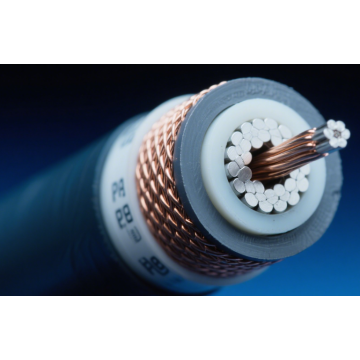Coaxial Cable
(Total 1 Products)
-

UL-1354 Coaxial Cables for Signal Propagation
Contact Now
-
Brand:szxyq
Min. Order:1 Piece/Pieces
Model No:002140
Transportation:Ocean,Land,Air,Express
Packaging:boxes
Supply Ability:1 million per month
Place of Origin:china
Productivity:1 million per month
UL-1354 single-core shielded cable is designed for internal connections in electronic equipment, offering high-temperature resistance (up to 105°C) and interference immunity, making it suitable for various harsh working environments. UL coaxial...
A
Coaxial Cable is an elegantly designed electrical cable whose unique construction allows it to efficiently carry high-frequency electrical signals. It consists of four concentric layers: a central copper conductor for signal transmission, surrounded by an insulating dielectric layer, which is then enclosed by a braided mesh outer conductor that also acts as a shield, all protected by an outer jacket. This sophisticated design effectively confines the electromagnetic field between the inner and outer conductors, thereby minimizing signal loss (attenuation) and external electromagnetic interference (EMI), ensuring signal integrity and clarity. Although fiber optic technology has rapidly advanced in the realm of ultra-high-speed data transmission in recent years, coaxial cable remains an irreplaceable choice in numerous applications due to its reliability, durability, and relatively lower cost.
The performance and application of this cable largely depend on its impedance characteristics and shielding quality. Common impedance ratings include 50 ohms (widely used in radio transmitting equipment, laboratory instruments, and early computer network Ethernet) and 75 ohms (primarily used for video signal transmission, cable television systems, and satellite antenna connections). Depending on the shielding effectiveness, coaxial cables are categorized into various types, such as single-shield, double-shield, or even quad-shield, with more shielding layers providing greater resistance to interference. Consequently, coaxial cable forms the infrastructure of cable television networks, closed-circuit television (CCTV) systems, radio communications, and home TV satellite reception. From professional broadcast equipment to home broadband networks (e.g., Cable Internet) and amateur radio communications, coaxial cable continues to play a vital role in modern connectivity.
SZXYQ's coaxial cables are widely used in signal transmission, data communication, video surveillance, broadcasting, and other fields. Their name comes from their structural design, where the conductor, insulation layer, shielding layer, and outer sheath share a single axis, giving them excellent anti-interference capabilities and stable signal transmission performance. Due to their superior electrical properties and anti-interference capabilities, coaxial cables occupy an important position in high-frequency signal transmission.
Excellent Anti-Interference Performance
coaxial cables ideal for use in environments with high levels of interference or in applications requiring high signal integrity, such as communication systems, medical devices, and industrial controls.
High-Frequency Signal Transmission Capability
Coaxial cables excel at transmitting high-frequency signals due to their low attenuation, low distortion, and excellent signal isolation properties.
Variety of Types and Specifications
Coaxial cables come in a variety of specifications and types, such as RG59, RG6, RG11, and others, each suited for different signal transmission requirements.
High-Temperature and Voltage Resistance
Many coaxial cables can operate within a temperature range of -40°C to +85°C and can withstand varying voltage levels depending on their design.
What is the purpose of the shielding layer in coaxial cables?
The shielding layer in coaxial cables serves to protect the signal from external electromagnetic interference (EMI) and radio-frequency interference (RFI). This is especially important in environments with many electrical devices or communication equipment, as it ensures that the transmitted signal remains clear and undisturbed by external noise.
Can coaxial cables withstand high temperatures?
Yes, many UL-certified coaxial cables are designed to operate in temperatures ranging from -40°C to +85°C. The specific temperature tolerance depends on the materials used for insulation and the design of the cable. For applications in extreme temperatures, users should select coaxial cables rated for those specific conditions.
Are coaxial cables suitable for outdoor use?
Coaxial cables can be used outdoors, but it's important to ensure the cables are made with UV-resistant and weatherproof materials. Outdoor-rated coaxial cables often have protective jackets made from UV-stable and weather-resistant materials like PE or TPE to ensure durability and protection from the elements. Always verify that the cable is suitable for outdoor or harsh environmental conditions.







